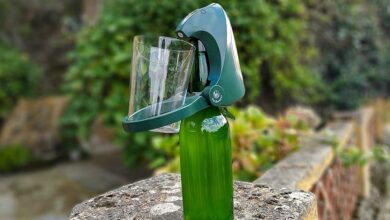carbonica maceration

Carbonic maceration is a technique that has been known for a long time, with which the so-called cosechero wines or wines of the year are produced. These wines tend to be fresher, lighter and fruitier; made to be consumed in the same year. In this article, we will explain step by step what the carbonic maceration of wines consists of.
The first Spanish carbonic maceration wines originated in La Rioja, the main wine-growing area in Spain. Specifically, the first wines made using this process originated in the Alava area of the region and in several wineries in La Rioja Alta. It is a traditional system, which was already used in the 17th century, but was recovered and popularized in 1872, by which the first winemaker, the French chemist Louis Pasteur, is considered. Today, the best Rioja wines are made using this method.
Later, in the 20th century, the researchers Michel and Claude Fanzy, also of French origin, were responsible for stabilizing this method of macerating red wines.
Carbonic maceration does not use yeasts of any kind for its alcoholic fermentation, so it is considered a spontaneous maceration system and is essential in the way wine is made in certain DO Carbonic fermentation wines convert the sugar in the grape into alcohol through the natural yeasts of the fruit and the vineyard itself. It is for this reason that it was the system used in ancient times.
How are these wines?
Carbonic maceration wines are lighter, with less sugar and lower acidity. They have an intense violet color and stand out for their powerful and fruity aromas, with a smooth and pleasant taste.

Carbonic maceration in winemaking
Maceration is a basic process in how this drink is made, since it is the moment in which the grape juice (must) becomes wine. The wines made by carbonic maceration go through two different stages.
The first lasts between one and two weeks and takes place intracellularly. At this point, the clusters are deposited in vats as soon as they are harvested, without removing the stems. The tanks in which this process takes place have an atmosphere saturated with carbon dioxide that eliminates oxygen, which is why this stage is also called anaerobic.
Intracellular fermentation, so named because it takes place inside the cells of the grape and the stems of the bunch, requires small or medium-sized containers, which should not exceed 300 liters, so that the bunches remain as whole as possible. and facilitate discovery. That is, the separation between the must and its solid parts. When larger vats are used, it is necessary to apply techniques that prevent the clusters from breaking.
As we have already explained, the tanks must be free of oxygen, for which carbon dioxide is used, which can be of industrial or natural origin. The natural one is produced by initiating an alcoholic fermentation of the must at the bottom of the vat, which releases the carbon dioxide that expels the oxygen from the vat. This natural process increases the fermentation time of the wine, but produces wines suitable for consumption by vegans, since the entire process is completely natural.
The second phase consists of alcoholic fermentation, in which the solid parts are removed and the must is allowed to ferment.
Characteristics of the first stage
The carbonic fermentation of the must has a peculiarity and it is that the container must be completely filled, since unlike other fermentation methods, the volume of the content suffers a decrease. This type of fermentation requires a constant temperature of between 30 and 32 degrees, so strict temperature control is needed.
On the other hand, this type of fermentation produces a large amount of harmful bacteria, so it is usual that, at this point, some type of sulfite has to be added to maintain the salubrious and sanitary conditions of the wine.
However, in most cases, producers of carbonic maceration wines do not usually manipulate the mixture, nor do they add chemicals. This is due to the fact that they seek a greater extraction of substances, which is why they subject the musts to pumping over. Unfortunately, as these wines contain stems, pumping over runs the risk of releasing vegetable flavors, creating a wine with a herbal flavor or a high content of green tannins, which is why punching and stirring is not recommended.
This step-by-step winemaking does not require the initial crushing, since the clusters and their stems are crushed by themselves as the grapes degrade due to weight and time. At this point, while the grapes are crushed and the must appears naturally, alcoholic fermentation begins.

Characteristics of the second stage
After the first phase of carbonic fermentation, the must is extracted. Approximately 70% of the must is extracted by “bleeding”, which is nothing more than the process that we have detailed in which the grapes are naturally squeezed and release the broth. The rest is done by crushing the solid parts that still remain.
Finally, the free must of all its solid parts is allowed to ferment naturally. This process is very delicate, since it is necessary to constantly monitor that the temperature does not change, since otherwise the fermentation is cut off and the wine spoils.
Now you know how to make wine step by step, so you can enjoy these young and great-tasting wines at a dinner, on your terrace with your friends, under the light of a good outdoor LED spotlight so you don’t miss a thing..



